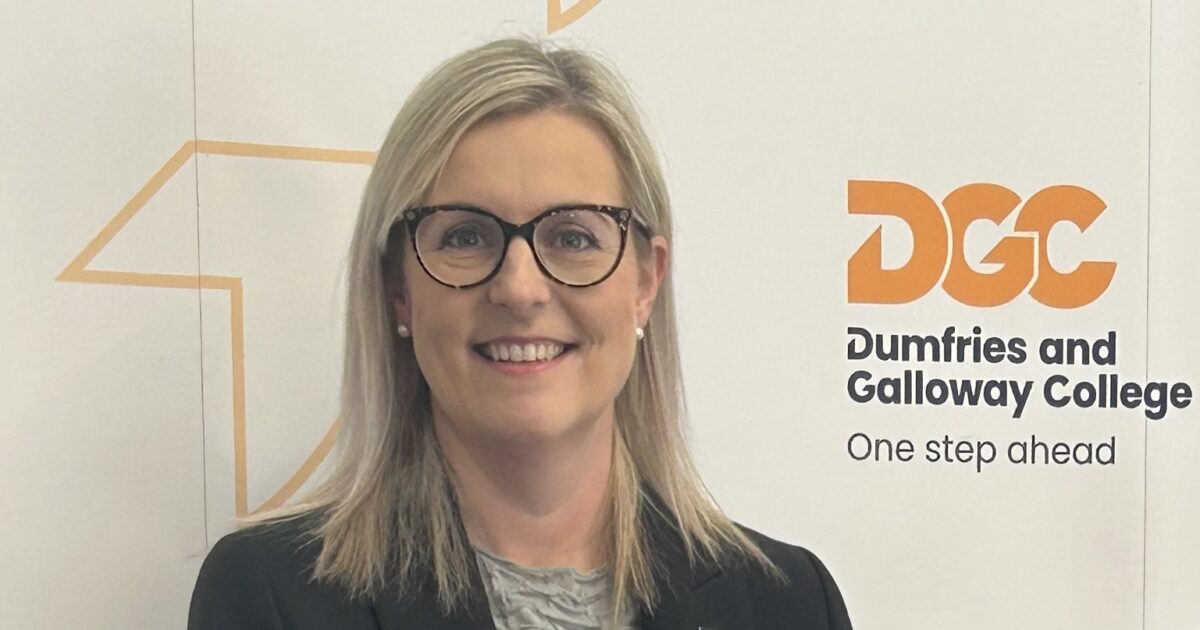Unacceptable, unnecessary harm to vulnerable adolescents being failed by maze of services

- Failure of ownership and ‘reluctant’ leadership by Government
- Safeguarding systems not working in some areas with tragic consequences
- Increase in overrepresentation of ethnic minorities in youth justice system
The estimated lifetime cost of adverse outcomes for all children who have ever needed a social worker is £23 billion every year. In a report today the Public Accounts Committee says the social and personal costs of harm and adverse outcomes to vulnerable adolescents who are being failed by the system are unacceptably and unnecessarily high.
There is a ‘puzzling reluctance’ across Whitehall to provide strategic leadership, while fragmented ownership across agencies and departments leaves young people to fall through the cracks. The safeguarding structures are not working in some areas, sometimes with tragic consequences. With no one department or agency with overall responsibility, the risk is that the buck gets passed.
The Committee is extremely concerned about the waiting time for children to receive support for mental health issues, with some of a group of 750 children and young people in Gloucestershire waiting over 18 months for mental health treatment.
The problem is significant: nearly one in five 6- to 16-year-olds in England had a probable mental health disorder in 2021, and almost 40% have experienced a deterioration in mental health since 2017. There is also a much higher proportion of adolescent girls using mental health services – 18% compared to 11% of boys.
While the number of children in youth custody across all ethnicities fell by 73% from 2010-11 to 2020-21, the proportion from ethnic minority backgrounds increased from 32% to 53%. Young black boys aged 10-17 are 2.8 times more likely to enter the youth justice system than would be expected given the proportion of black children this age in the population. The number of mixed heritage children in the youth justice system has doubled since 2010.But the Ministry of Justice and the Home Office lack curiosity about the over-representation of children from ethnic minority backgrounds in youth custody and still appear to have no plan to address the situation.
Dame Meg Hillier MP, Chair of the Public Accounts Committee, said:
“The Department for Education tells us that it holds the ring across Government on supporting and protecting adolescents, but in the same breath had to say it hadn’t even started work on the harms from social media. Young people from ethnic minority backgrounds are grossly overrepresented in the youth justice system, a problem that’s been obvious and growing for a decade, but there’s no sign of action or even special attention to the issue.
“It’s hard to escape the feeling that our young people, especially the ones who were already vulnerable and at risk, are being treated as an afterthought. Too often they fall the cracks of different services and are left to fend for themselves. The financial cost of these failures is already a bank-breaking £23 billion a year. Is the Government prepared to fund what that will grow to, when the problems it’s failing to tackle now come home to roost?
“And there is no number that can be put on a child dying because of a failure to co-ordinate across so-called safeguarding services. After this report, we expect Government to produce an annual update on how it’s improving outcomes for adolescents. Not the plans and programmes it’s making – we want to see the evidence of better outcomes, every year.”/
PAC report conclusions and recommendations
- Government has not demonstrated it understands the cumulative scope and impact of avoidable adverse outcomes for vulnerable adolescents.
When vulnerable adolescents are not identified and provided with effective and timely support the costs to themselves, in lost life chances and society can be significant. In particular, when their needs are complex, due to overlapping factors, understanding is still limited. For example, 72% of children sentenced in 2019-20 were assessed as having a mental health concern and research published in 2022 found 81% of adolescents cautioned or sentenced had at some point been persistently absent from school, compared to 44% of the whole pupil population who had ever been persistently absent from school. Government claims to understand these overlaps but the National Audit Office report collates for the first time a wide range of information from across government about the adverse outcomes facing the most vulnerable adolescents. We are concerned about the Government’s apparent lack of focus on this very important cohort and lack of measures to know whether its programmes are improving outcomes for vulnerable adolescents.
Recommendations
- a) Government should set out within six months the measures it will use to track whether outcomes for vulnerable adolescents are improving.
- b): Annually thereafter Government should produce a report on progress in improving outcomes for vulnerable adolescents.
- There is reluctant leadership of the challenges faced by vulnerable adolescents which undermines ownership of the problem.
The Department for Education reluctantly confirmed that it is ultimately responsible for ‘holding the ring’ across Whitehall on vulnerable adolescents. However, it is not clear what this means or how it translates into action when so very many government departments and local agencies play a role in supporting vulnerable adolescents. The Vulnerable Children and Young People Strategy Board has recently been repurposed to provide a co-ordinating picture, bringing together government’s understanding of complex children and young people. This is a start, but it has only met once and it is too early to say what role this Board will play in helping to unify support and identifying and helping to address gaps and overlaps that impact on vulnerable adolescents. TheDepartment for Education tells us that its overarching responsibility should not translate into to a single system but there is a lack of common definitions or language that will help young people navigate the disjoined systems and receive the support they need. Government has specific programmes to support specific vulnerabilities and joins up individual programmes between departments. However, we agree with the current Children’s Commissioner that collaboration is not taking place at the strategic level that is needed to provide the proper support for vulnerable children and young people.
Recommendation:
- The Department for Education should set out within six months its accountabilities for vulnerable adolescents, the terms of its leadership role and how strategic planning and oversight will work.
- Critical local multi-agency safeguarding partnerships are still not working well enough, which risks those vulnerable adolescents that need support and help falling through the gaps.
While in some places multi-agency safeguarding partnerships may work well, in other places, sadly, they do not. In May 2022 the Child Safeguarding Practice Review Panel found multi-agency safeguarding arrangements “are not yet fit for purpose everywhere” and are more fractured and fragmented than they should be, with weak links between the leadership and the front line risking vulnerable adolescents that need support and help falling through the gaps. The three statutory partners – police, health and local authorities – have a shared and equal duty to protect children and young people. We are concerned that if no one is solely responsible, the buck will be passed. We note that education is not a statutory partner and that the independent review of children’s social care has already recommended that schools be named as a fourth safeguarding partner. The Department for Education tells us it is continuing to improve multi-agency safeguarding arrangements and it considers that professional curiosity and good quality leadership across the three partners are key. It tells us it works area by area to understand where there are risks and has recently restructured to bring its regional focused teams together. However, the Independent Children’s Social Care Review found the existing mechanisms for independent scrutiny to be ‘relatively weak’ and it is not clear to us how the Department knows where to focus its support.
Recommendation:
- Government should set out within six months how it plans to improve the way multi-agency safeguarding partnerships work.
- It is not clear how lessons and learning from changing threats, serious case reviews and child safeguarding review panels are embedded in day-to-day practice.
Time and again reviews into child deaths highlight poor coordination between services, including insufficient joined-up leadership and a lack of appropriate and timely information-sharing around cases, as a contributing factor in the death. Adolescents may be exposed to ‘extra-familial’ harms which occur outside the home, such as sexual exploitation, modern-day slavery, serious violence and criminal exploitation. The Department for Education acknowledges the care system was designed to response to harm originating from inside a family. However, we were told there is a growth in older age groups and an increasing occurrence of extra familial harms. As such social work practice and the design of the care system is still adapting to known and changing risks to vulnerable young people. The Department for Education tells us it does evaluate what works but good practice does not reach everywhere, and social work practice is still variable. Despite the learning available it is unclear how lessons are disseminated to those people working directly with vulnerable adolescents to ensure that necessary actions are taken by all those that play a role in safeguarding children. The Department acknowledges that it would be helpful to build lessons into national standards, to reduce the reliance on every individual within the system identifying and acting on lessons learnt.
Recommendations
- a) Government should set out within six months how it will ensure that learning from national reviews is built into day-to-day practise, including supporting appropriate and timely data sharing, by those working with vulnerable adolescents.
- b) The Department for Education, in its response to the Care Review should set out how the revised care system will more effectively address the risks to adolescents posed by extra-familial threats.
- We are extremely concerned about the waiting time for children to receive support for mental health issues and about the proportion of adolescent girls seeking help.
A survey found nearly 1 in 5 of 6- to 16-year-olds in England had a probable mental health disorder in 2021. The same survey also found that almost 40% had experienced a deterioration in mental health since 2017. In addition, 13.5% of 11- to 16-year-olds felt their lives had been made ‘much worse’ by COVID-19 restrictions. But support is not meeting children’s need and some children with mental health issues have had to wait a very long time to start treatment. In 2020-21 the average waiting time for children to start treatment for their mental health issues at different health bodies ranged from 6 days to 81 days, with more than 22,000 (5%) of children and young people waiting more than 12 weeks. The proportion of adolescent girls known to be in contact with secondary mental health services is far greater than for boys. For example, 18% of 16-year-old-girls are in contact with secondary mental health services, compared to 11% for boys. The Department for Education tells us there has been additional funding, some of which is particularly focused around eating disorder services, because it had seen the waiting lists for those rise and a pandemic-related impact, particularly on young girls. There has also been an NHS England consultation, which closed early in 2022, on introducing waiting time standards for access to community and A&E mental health care. However, we are yet to see these standards implemented.
Recommendation:
- Government should report back to committee within six months on progress on the implementation of access standards for community and A&E mental health care.
- The Ministry of Justice and Home Office seem to lack curiosity about the increase in the proportion of children from ethnic minority background in youth custody and appear to have no current plan to address the situation.
While the number of children in youth custody across all ethnicities has reduced by 73% from 2010-11 to 2020-21, the proportion from ethnic minority backgrounds has increased (from 32% to 53%). Furthermore, a recent HMI Probation report found that young black children, aged 10-17, are 2.8 times more likely come to the attention of the youth justice system as would be expected given the proportion of black boys this age in the general population while the numbers of mixed heritage children in the youth justice population has doubled since 2010. These disproportionate outcomes have been highlighted in previous reviews dating back many years, but the Ministry of Justice and Home Office still cannot fully explain the disparity. The Ministry tells us that there are a range of complex “societal factors” at play, but acknowledges that some interventions may be introducing disparity, such as the police’s use of stop and search and decisions about whether to remand someone in custody ahead of their trial. It says it is working to improve the clarity of decisions about whether to remand someone in custody. However, overall neither the Ministry of Justice and Home Office have clear plans for how they will reduce the disparities in the proportion of ethnic minority children entering youth custody.
Recommendation:
- Ministry of Justice and Home Office should report back within six months on what they understand about ‘what works’, and what action they will take to understand why ethnic minority children make up over half of all children in custody. They should also set out how they will use the understanding to address the issues.
- Data sharing exercises need to be better used to understand the support vulnerable adolescents need.
The poor outcomes experienced by vulnerable adolescents are often overlapping. For example, 72% of children sentenced in 2019-20 were assessed as having mental health concerns. And one in five of 16-24-year-old young people not in education, employment or training had a mental health condition in 2021. The Department for Education told us the overlaps between different vulnerabilities were complicated and that data sharing helped them identify overlapping groups of vulnerable adolescents who need support. But without better data sharing it is very hard to understand how all the different risk factors and vulnerabilities overlap and there is scope for better understanding of all overlapping needs. Departments have plans to improve the join up of different government data sets on vulnerable adolescents, including by linking anonymised health and education data. Whilst this is positive, the government does not have any clear plans for how the exercise will be used to better understand the risks that vulnerable adolescents face so that it can provide more targeted support.
Recommendation:
- The Department for Education should take the lead in coordinating and setting out within six months an agreed approach to how departments will collect and use data to understand the pathways to adverse outcomes for vulnerable adolescents.











Responses